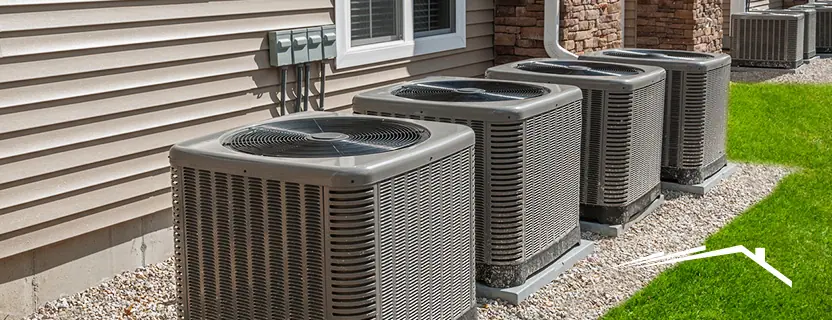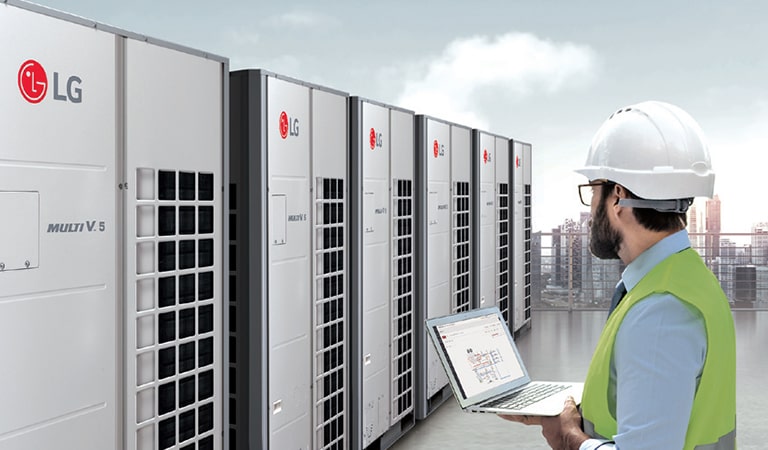Warning Signs It's Time for a furnace replacement
Warning Signs It's Time for a furnace replacement
Blog Article
Just How a Heat Pump and Heater Collaborate to Maximize Your Home's Home heating Performance
Recognizing exactly how a heatpump and heater collaborate is necessary for homeowners seeking efficient heating solutions. Each system has its strengths, giving a balanced technique to home convenience. The heatpump excels in moderate temperature levels, while the furnace provides quick heat throughout severe cold. This harmony not just lowers energy expenses but likewise enhances the lifespan of both home appliances. What elements affect this partnership, and exactly how can house owners optimize their benefits?
Understanding Heat Pumps: Just How They Function
Many people might be strange with their inner functions, warm pumps play a crucial function in modern-day home heating systems. These tools operate by moving heat from one location to one more, utilizing the principles of thermodynamics. In chillier months, a heat pump removes warm from the outdoors air, ground, or water, and transfers it inside to heat the living area. Conversely, during warmer months, it can reverse the process, functioning as an ac unit by expelling warmth from inside to the outside.Heat pumps contain an evaporator, compressor, development, and condenser valve. The cooling agent within the system takes in heat as it vaporizes at low temperatures and pressures. The compressor then enhances the pressure and temperature level of the cooling agent, permitting it to launch warm as it condenses. This efficient process can considerably minimize power usage contrasted to traditional heating techniques, making heatpump a sustainable choice for environment control in homes.
The Role of Heating Systems in Home Home Heating
Heating systems play an important role in home heating by providing a trustworthy resource of heat during the chillier months. They run by producing warm via burning or electrical resistance, distributing it throughout the home by means of air ducts or radiant systems. The performance of a furnace is commonly gauged by its Annual Fuel Usage Efficiency (AFUE) score, which indicates exactly how effectively the system converts fuel right into heat.Furnaces can utilize different power sources, including all-natural gas, oil, electrical power, or gas, permitting home owners to choose one of the most suitable choice for their needs. Unlike warmth pumps, which might have a hard time in severe cold, heaters preserve constant performance, ensuring that indoor temperature levels continue to be comfortable no matter outside problems. Additionally, modern heating systems often come equipped with sophisticated modern technology, such as clever thermostats and variable-speed blowers, boosting their efficiency and responsiveness. This convenience makes heating systems an important part in all-encompassing home heating approaches.

Advantages of Using Both Systems With Each Other
Combining the strengths of both heating systems and heatpump can lead to a much more reliable and effective home heating solution. Making use of both systems allows property owners to capitalize on the heat pump's power efficiency during milder temperatures while depending on the heater for more severe cold conditions. This twin technique can significantly lower energy costs, as heat pumps consume much less power than typical heating techniques when temperatures are moderate.Additionally, using both systems with each other can improve convenience degrees in the home. Heatpump can offer regular, also heating, while heaters can promptly raise ambient temperature levels when needed. The assimilation of both systems can prolong the life expectancy of tools by reducing wear and tear on each system, as they share the workload. Inevitably, home owners can take pleasure in a balanced, economical home heating solution that changes flawlessly to differing weather condition conditions, making sure a warm and inviting home throughout the cold weather.
Exactly How Warmth Pumps and Furnaces Complement Each Other
When property owners incorporate warm pumps and heaters, they create a corresponding heating unit that maximizes performance and convenience. Heatpump operate by moving warm from the outside air or ground, making them highly efficient in modest climates. They succeed throughout milder temperature levels, giving economical heating. On the other hand, heaters create heat with combustion or electrical resistance, providing strong, prompt warmth throughout extreme chilly conditions.The mix of these 2 systems enables vibrant adjustments based upon temperature changes. Throughout warmer months or milder winter days, the heatpump can take the lead, preserving power and lowering costs. As temperatures decrease, the furnace can effortlessly involve, ensuring constant heat throughout the home. This harmony not just maximizes power use however likewise enhances the life-span of both systems, as each system operates within its suitable efficiency range. Together, they develop basics a well balanced atmosphere that adapts to varying environment demands.
Optimizing Effectiveness: Tips for Homeowners
Homeowners can boost their heating performance via a number of sensible methods. Establishing a normal maintenance schedule, integrating wise thermostat modern technology, and executing efficient insulation and sealing options are key steps. These procedures not just boost convenience yet likewise minimize power costs.
Normal Maintenance Set Up
To guarantee optimal heating performance, developing a routine upkeep schedule is crucial for any kind of home. Homeowners ought to prioritize routine examinations of both heatpump and heaters to ascertain peak performance. This includes changing air filters every one to 3 months, as blocked filters can significantly lower effectiveness. Additionally, organizing expert upkeep a minimum of when a year enables professionals to recognize and address prospective concerns prior to they rise. Homeowners ought to also cleanse the heatpump's outdoor device to stop debris accumulation that can prevent air movement. By adhering to a routine maintenance timetable, homeowners not just enhance their home heating systems' efficiency however likewise prolong their lifespan, causing greater comfort and minimized energy prices throughout the cooler months.
Smart Thermostat Combination
Incorporating a clever thermostat right into a home furnace can substantially enhance power effectiveness, particularly as it permits specific control over temperature level settings. These tools can learn the homeowner's routine and preferences, automatically adjusting the temperature level to optimize convenience while reducing power usage. For circumstances, they can decrease home heating during times when the home is unoccupied, reducing unnecessary usage. Many wise thermostats additionally offer real-time power use information, enabling property owners to make educated choices about their home heating practices. Furthermore, remote access by means of smart device apps permits users to change setups from anywhere, guaranteeing the home is cozy upon return. In general, clever thermostat integration not only boosts convenience yet substantially adds to energy financial savings and performance.
Insulation and Sealing Solutions
Smart thermostats play an important function in power performance, yet their performance can be greatly boosted by correct insulation and sealing services. House owners need to focus on protecting floors, attics, and wall surfaces to lessen warmth loss. Top quality insulation materials, such as spray foam or fiberglass, can greatly boost thermal resistance. In addition, sealing spaces around doors, home windows, and ducts prevents cold air seepage and warmth getaway. Weatherstripping and caulking are efficient approaches for dealing with these leaks - heat pump service. Normal evaluations for air leaks, along with using blower door tests, can aid determine problem locations. By buying insulation and sealing, home owners can maximize the efficiency of their furnace, eventually leading to reduced power intake and lower utility bills
Typical Myths Regarding Warmth Pumps and Furnaces
What false impressions surround heatpump and heaters? Numerous people wrongly think that heatpump are ineffective in cooler environments. In truth, modern-day heatpump are designed to run successfully also in reduced temperature levels, supplying dependable home heating throughout winter. An additional typical misconception is that heaters are constantly extra reliable than heatpump. This depends on the specific energy resources and performance scores of the systems in concern. Some might also believe that using both systems all at once is unneeded, however in truth, this mix can enhance heating effectiveness, specifically during severe weather condition problems. In addition, people commonly presume that heatpump need constant maintenance, when actually, they news have comparable maintenance needs to standard furnace. By unmasking these misconceptions, home owners can make even more educated decisions concerning their home heating choices, ultimately causing improved convenience and energy effectiveness in their homes.
Maintenance Factors To Consider for Combined Systems

Frequently Asked Concerns
Can Heat Pumps Work Efficiently in Exceptionally Cold Climates?
Heatpump can battle in exceptionally chilly climates due to decreased efficiency and warmth removal limitations. Developments in technology have led to versions made for better performance in such conditions, enhancing their viability in severe atmospheres.
How Much Time Do Warm Pumps and Furnaces Normally Last?
Warmth pumps typically last 15 to 20 years, while furnaces have a life-span of 15 to 30 years. Normal upkeep can extend their durability, making sure effective procedure and lowering the demand for early replacements.

What Is the Typical Price of Putting Up Both Solutions?
The ordinary cost of setting up both a warm pump and a furnace typically ranges in between $5,000 to $10,000 - furnace replacement. Factors influencing this expense include click here to read system dimension, setup complexity, and regional labor prices
Are There Tax Motivations for Making Use Of Energy-Efficient Heating Solutions?
Several property owners ask about tax obligation motivations for energy-efficient heating unit. Various government and state programs often use rebates or credits, motivating the fostering of lasting modern technologies to lower power usage and advertise ecological duty.
Just how Do I Choose the Right Dimension Heatpump and Heater?
Selecting the right dimension warm pump and heating system includes determining the home's square video footage, taking into consideration insulation top quality, and reviewing local environment. Consulting a professional can ensure ideal system performance and energy efficiency based on specific demands. heat pump installation ooltewah tn. Understanding just how a warmth pump and heating system work with each other is essential for homeowners looking for reliable heating solutions. In colder months, a warmth pump removes heat from the outdoors air, ground, or water, and transfers it inside your home to warm up the living area. When house owners incorporate heat pumps and furnaces, they produce a complementary heating system that takes full advantage of effectiveness and convenience. Warm pumps operate by transferring warmth from the outside air or ground, making them very effective in moderate environments. Warm pumps can struggle in very chilly climates due to lowered effectiveness and heat removal restrictions
Report this page